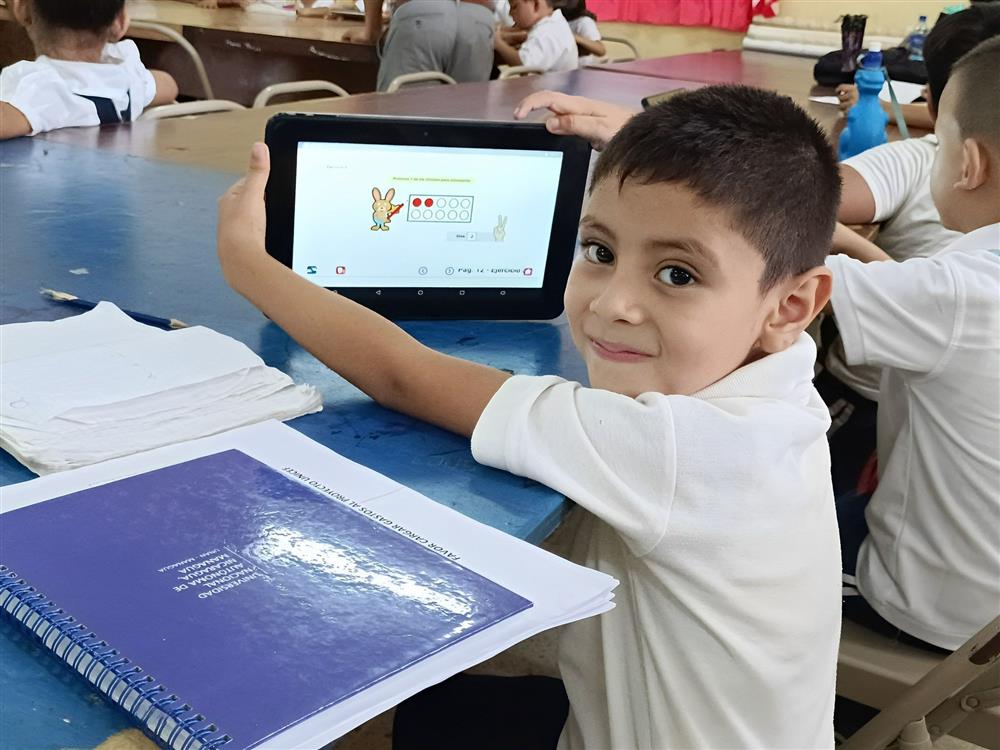UNICEF’s accessible digital textbooks for children with and without disabilities
- Solution
- Accessible Digital Textbooks (ADT) initiative
- Country of Implementation
- Colombia
- Start Year
- 2016
- First published
- 03.12.2023

Solution details
“This is my first time reading a book that has sign language. I am happy that I can share this book with my friend and that she is able to hear.” Ari, a 6-year-old deaf learner in Jamaica
Begun in 2016, UNICEF’s Accessible Digital Textbooks (ADT) initiative provides digital textbooks designed for tablets and desktops, which include accessibility features such as audio narration, integrated sign language video, and simple language tools. The initiative was developed with publishers, teachers, disability organizations, technology providers, and ministries of education. By 2023, ADTs have been deployed in nine countries spanning eastern Africa, Latin America, and the Caribbean, benefiting over 2,500 students globally, with 66 prototypes developed.
Problems Targeted
Access to quality education is a major challenge for children with disabilities, resulting in low enrolment and high drop-out rates.
Solution, Innovation and Impact
ADTs are digitized and adapted versions of curriculum-based textbooks used in classrooms and provide accessible learning for all students, including those with disabilities. They offer customization options such as narration, sign language, interactivity, audio descriptions, and more. ADTs promote equal educational opportunities and allow students to engage in numeracy and literacy activities in and out of the classroom. They are versatile, customizable, and typically used on electronic devices such as tablets or computers. For remote schools in low-connectivity environments, ADTs can be hosted on content access points and accessed locally. ADTs support multiple formats (EPUB, HTML, and apps.) ADTs are currently developed and available in nine countries: Colombia, Dominican Republic, Jamaica, Kenya, Nicaragua, Paraguay, Rwanda, Uganda, and Uruguay. Globally, 66 ADT prototypes have reached over 2,500 students. Over 1,600 ministries of education staff, teachers, and stakeholders in six Latin America and Caribbean countries have been trained in ADT production and use. In Kenya, Rwanda, and Uganda, 59 textbooks have been uploaded on national education clouds. Online courses are available in Colombia and Paraguay, and the UNICEF Global Portal on Accessible Digital Textbooks is available to all.
Funding, Outlook and Transferability
ADT usage continues to grow as UNICEF collaborates and partners with governments, foundations, and NGOs. The impact of the initiative has demonstrated its scalability and replicability in other regions where the organization aims to expand its reach by optimizing South-South cooperation. Moreover, an accessible multi-language online course will be developed for implementers, and hackathons will further leverage new technologies to create accessible content. (Awardee 2024)
Media
Pictures
Related information
- Connections
- 1
-
People